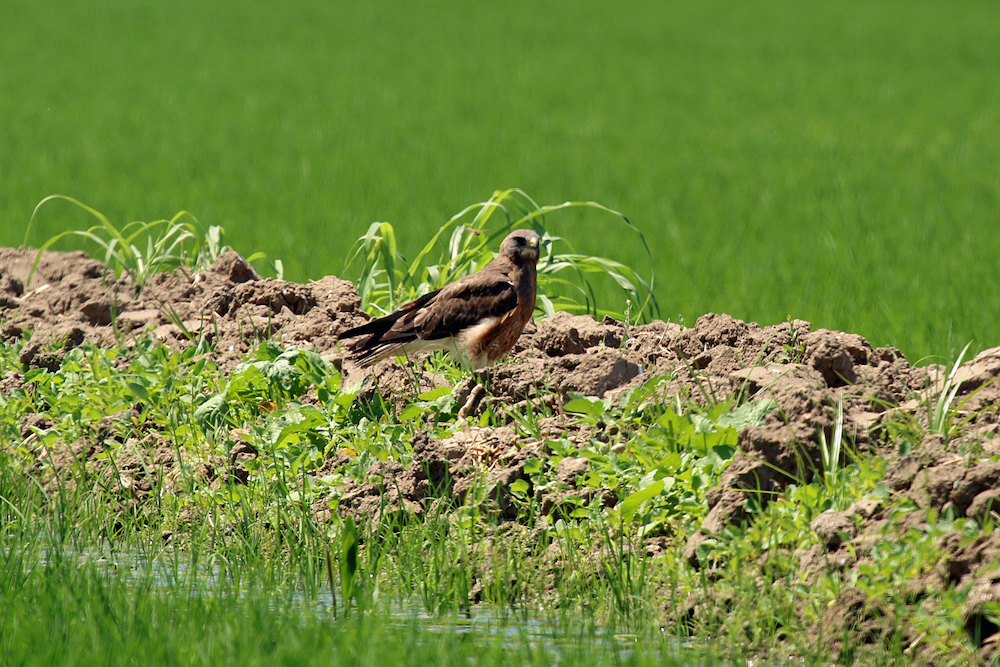Swainson’s Hawks in the Sacramento Valley
By Luke Matthews
Swainson’s Hawks spend most of the winter months in Central and South America, migrating back up the Pacific Flyway to summer in the United States and Canada. These hawks prefer open habitat such as grasslands or agricultural fields and they are common throughout the West and Midwest. Swainson’s Hawks have become well adapted to agriculture and now heavily rely on fields as their hunting habitat. In fact, they are so accustomed to agriculture that they have learned how to best take advantage of disturbances in the fields, which can expose prey. Examples of this are agricultural activities such as flood irrigation, mowing, baling or tillage and they can attract very large groups of hungry Swainson’s Hawks and other birds looking for an easy meal.

While Swainson’s Hawks rely on open habitats for hunting, they also require mature trees for nesting. These hawks prefer riparian areas with a variety of large trees to nest in; however, they will also use scattered trees in grasslands or on the edges of agricultural fields. Nests are typically built on a platform of sticks high up in a tree. During the nesting period females attend to the eggs while their partners hunt and bring food to the nest. Once the eggs have hatched, hunting becomes a full time job for both parents and the pair will travel up to 20 miles from the nest in search of rodents, rabbits, and reptiles and bring back to their chicks.
As we all know, drought is a significant issue in the Sacramento Valley this year. Reductions in water availability will undoubtably impact planted acres of rice, wheat, alfalfa and other annual crops that Swainson’s Hawks are adapted to rely on. Without these crops, food sources for birds of prey may also be limited due to the dry conditions. Nevertheless, these birds have started to arrive in the Sacramento Valley and will begin to build their nests soon. So, if you are out in the countryside, keep an eye open for these beautiful hawks.
Luke Matthews is the Wildlife Programs Manager for the California Rice Commission






